The Filzmäuse Are Not Cute,They're Brilliantly Strange
It starts with felt. But not the cozy kind. Not the one you’d find cushioning a child’s toy box.
Felt flags, fuzzy weapons, soft chaos, Filzmäuse are rewriting what collectives can do.
The felt in the hands of the Filzmäuse is strange, punky, a little feral. And the artists?
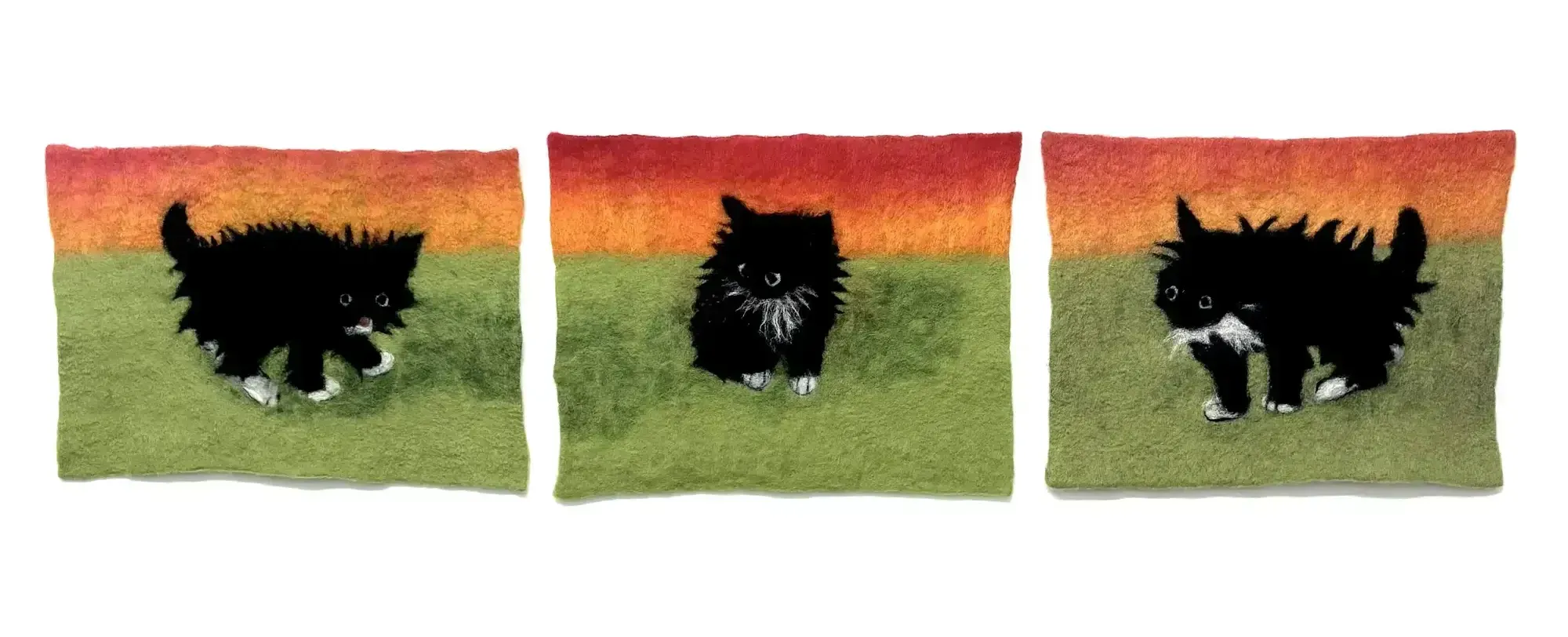
A mismatched dream team of wit, instinct, and irreverent precision. Together, they don’t just make work. They build a world.
A fuzzy, warped, sometimes hilarious, sometimes tragic, oddly touching world, stitched and sculpted out of wool, nostalgia, and too much brain activity.
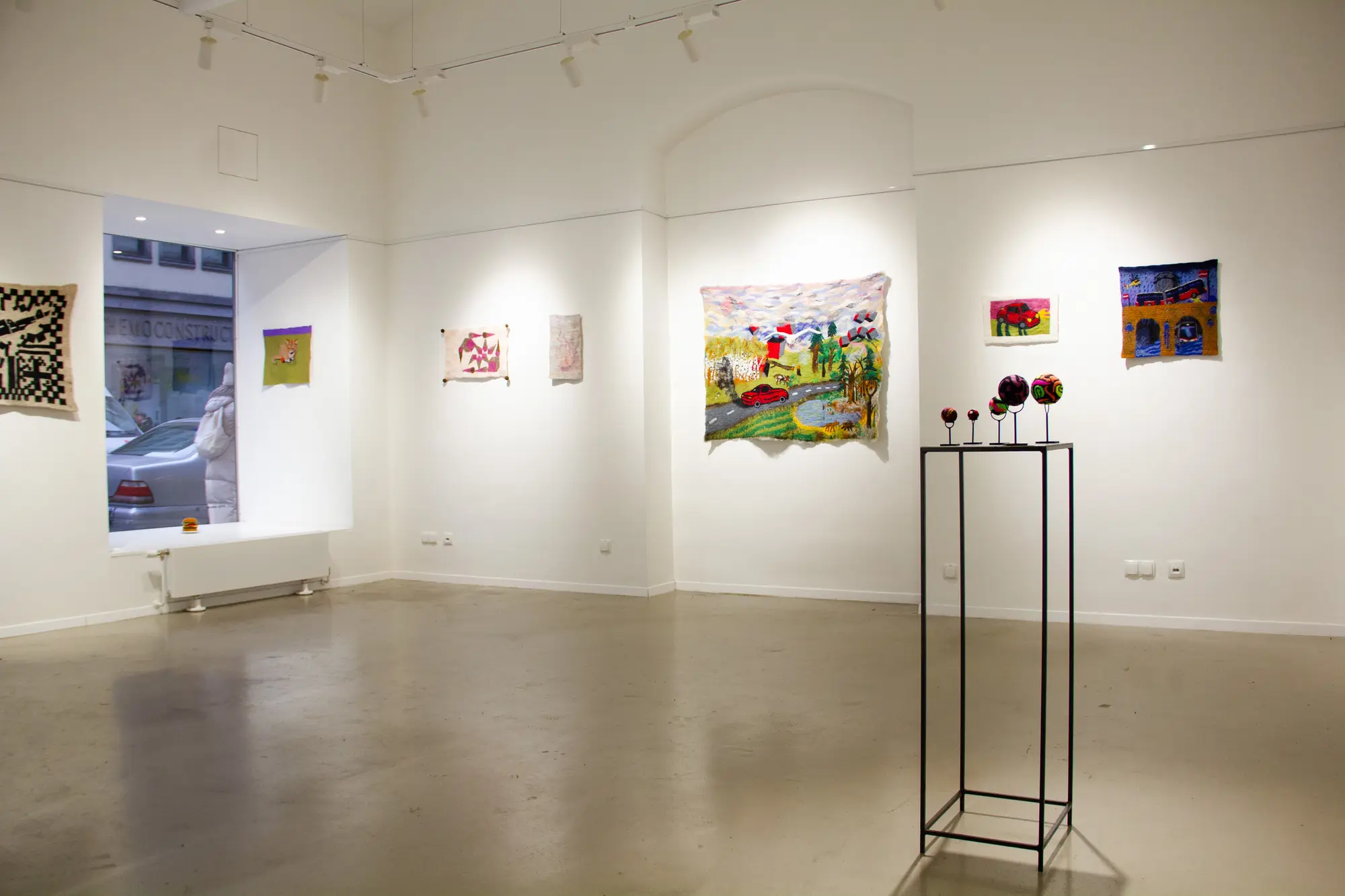
The group’s name, Filzmäuse, flirts with absurdity from the get-go.
In German, it literally means “felt mice.” But they’re more like trickster spirits, sneaking into art spaces with soft sculptures that hit harder than expected.
Formed in Vienna in 2024, the group is composed of Bugra Ates, Janinka Kell, Moritz Mizrahi, and Sigmund Hutter.
Each brings a distinct vibe. Together, they’re unstoppable.
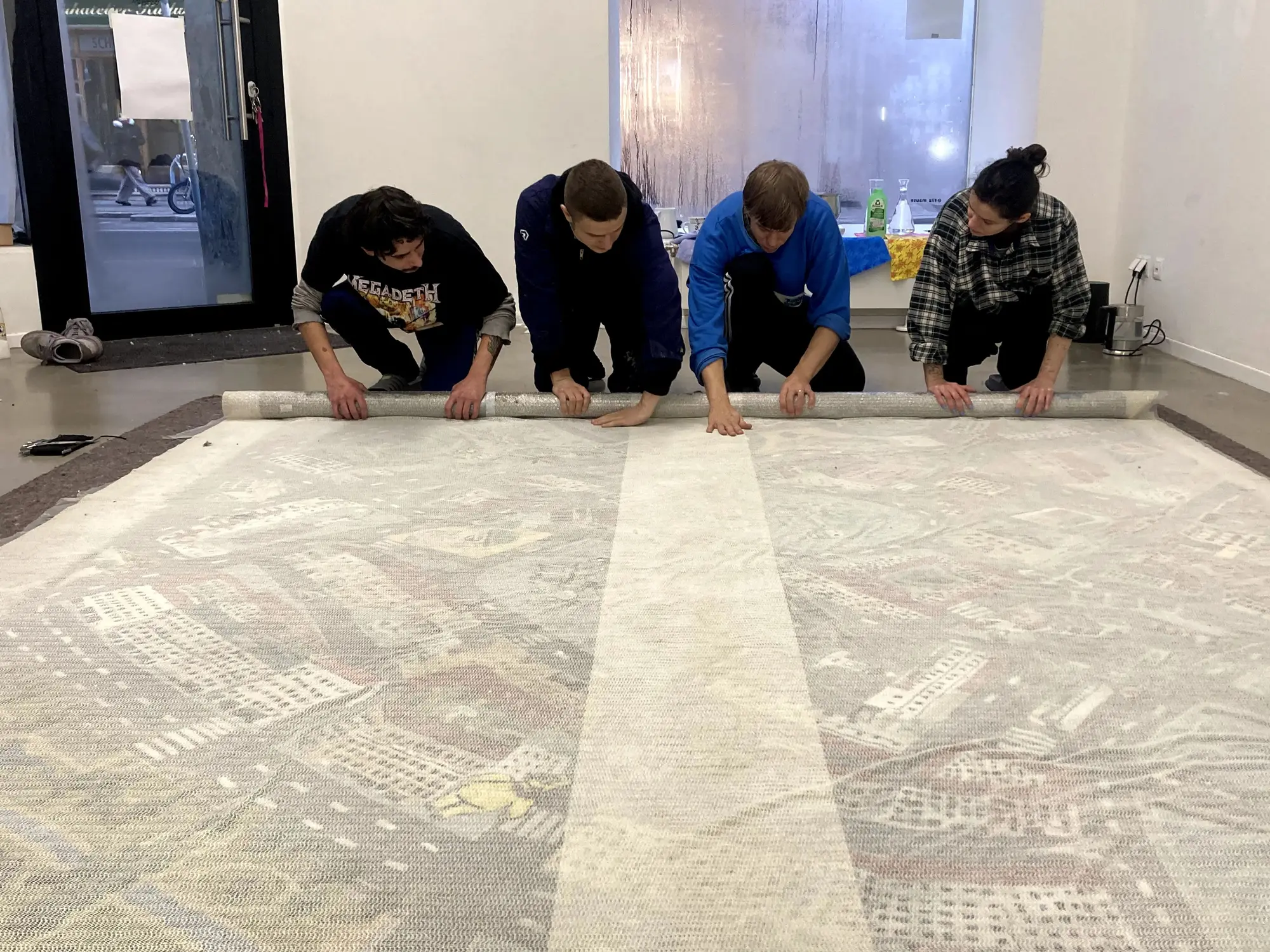
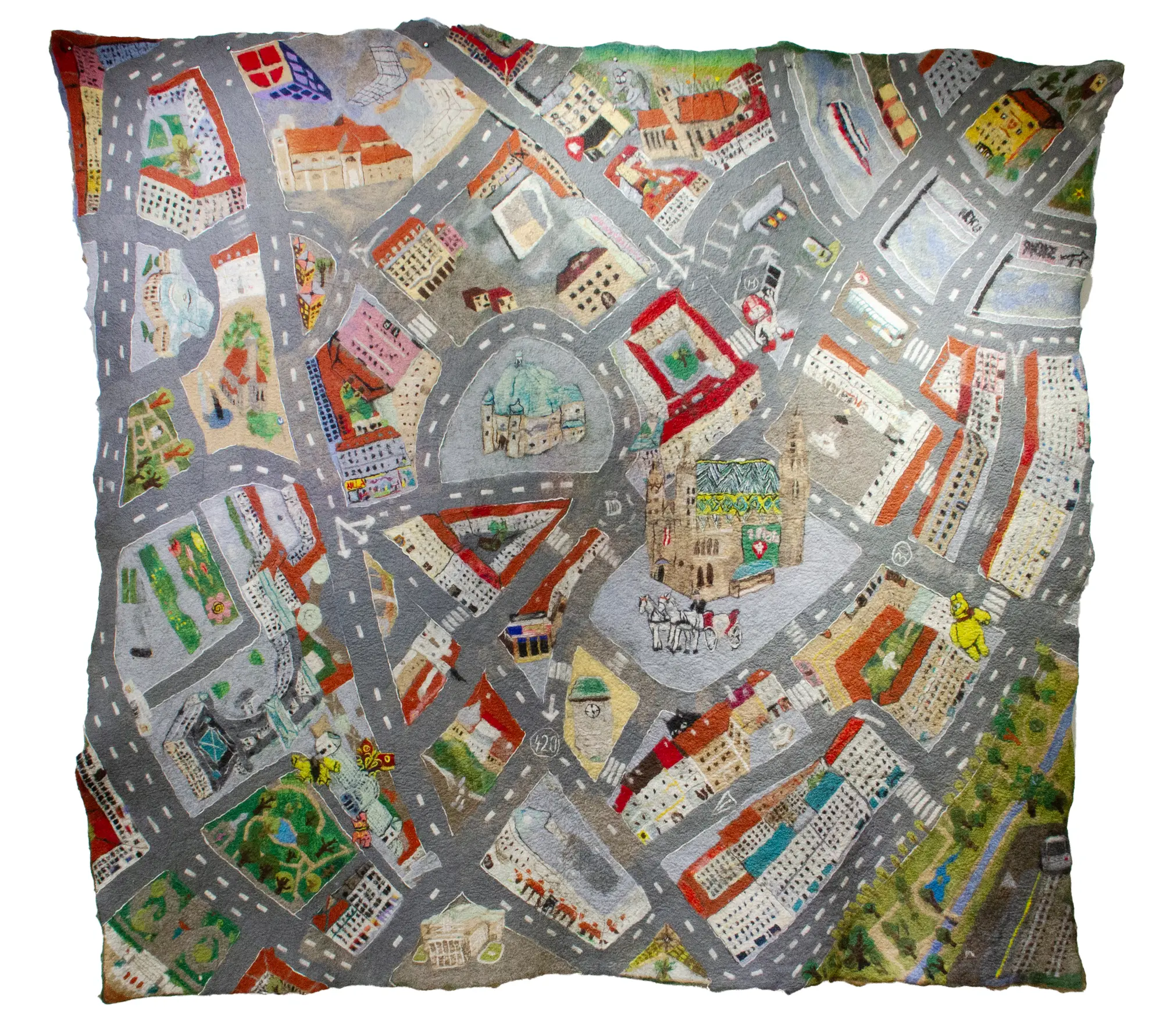
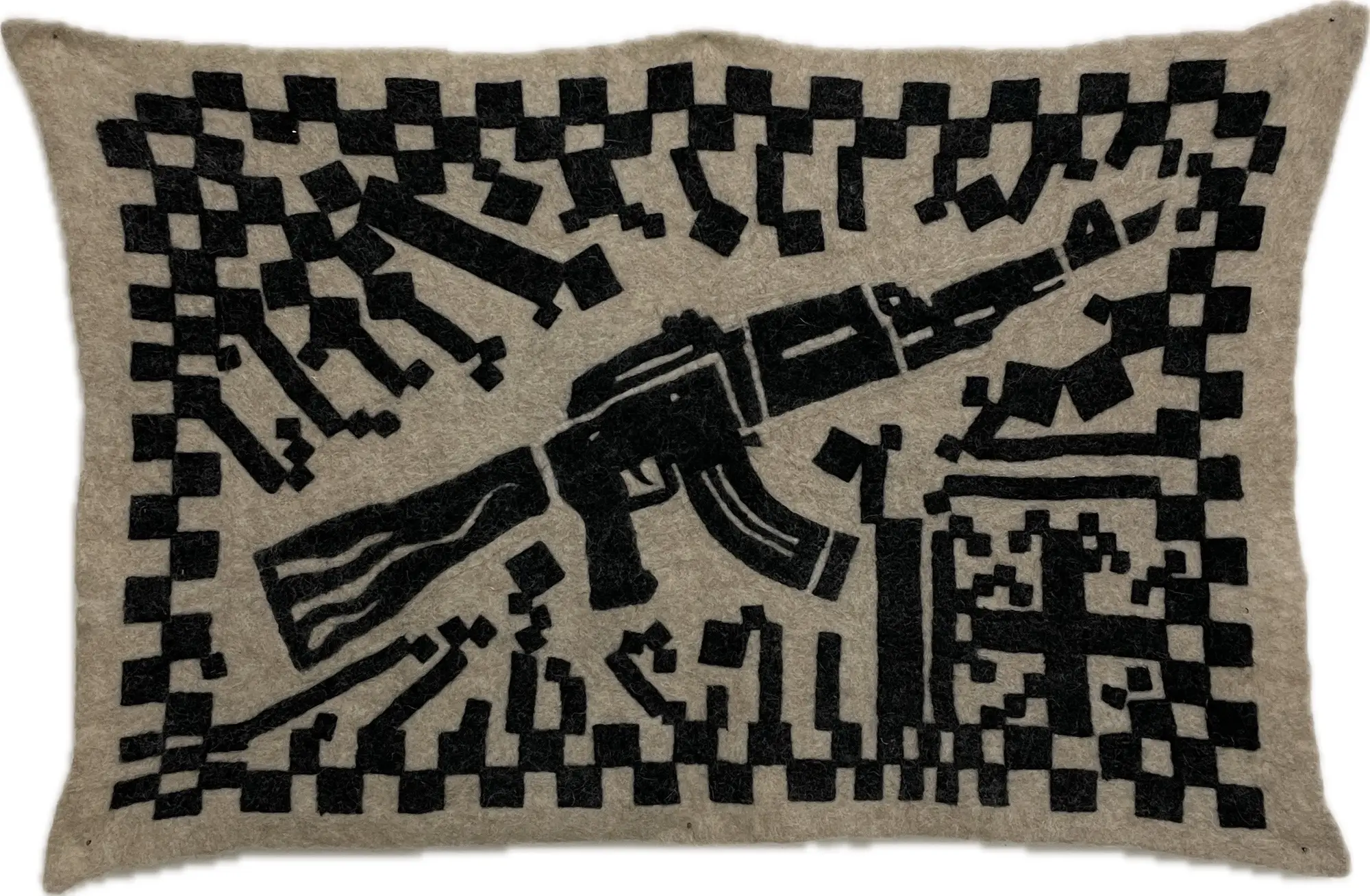
Let’s get the technicality out of the way: Filz, or felt, is a non-woven textile made by matting, condensing, and pressing fibers. But in their hands, it becomes a weapon. Political. Playful. Poetic. Often all at once.
Buğra Ateş, born in Berlin with roots in Turkey, shifts between oil paintings, zines, and soft sculptures that feel like meme-poetry meets post-migrant pop-culture relics.
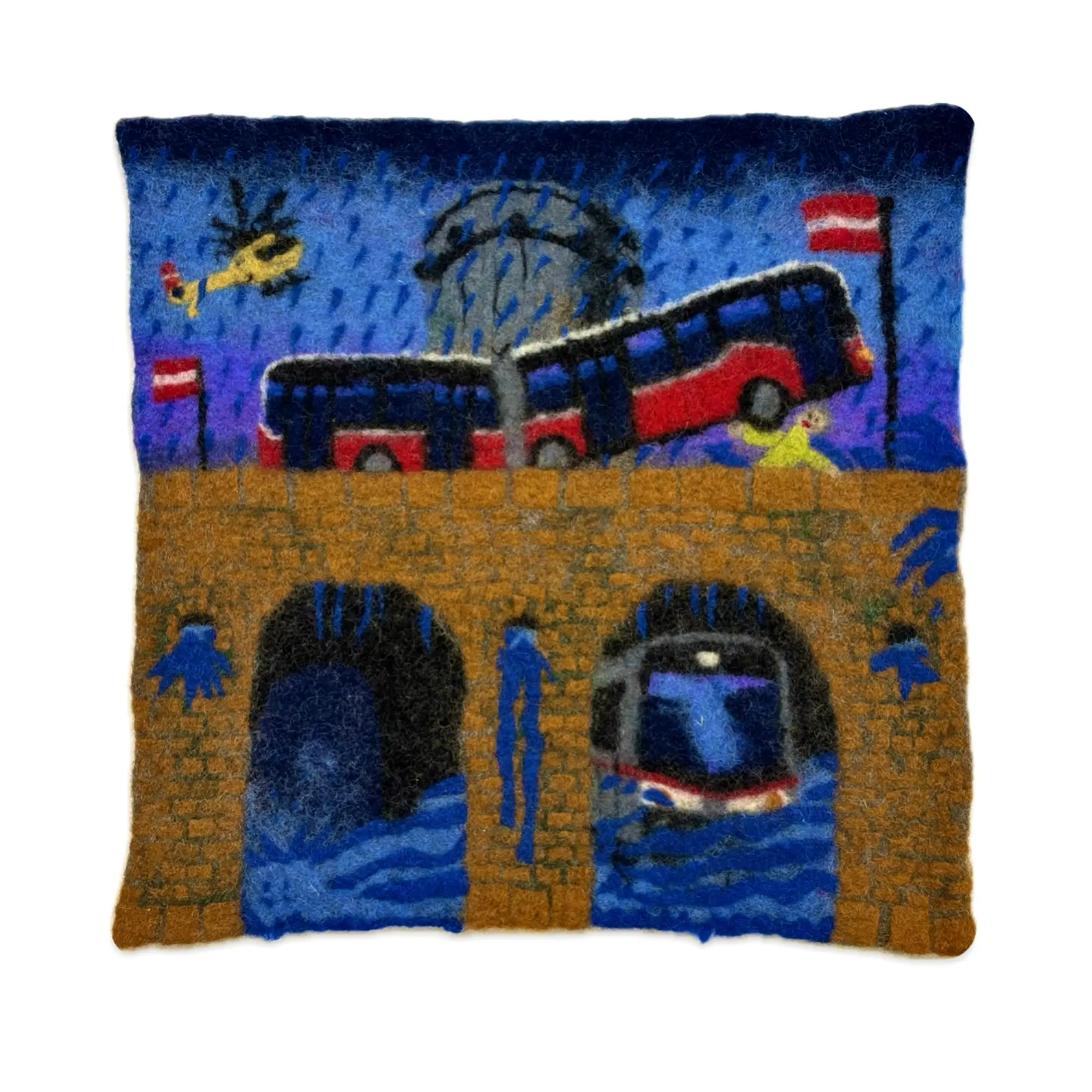
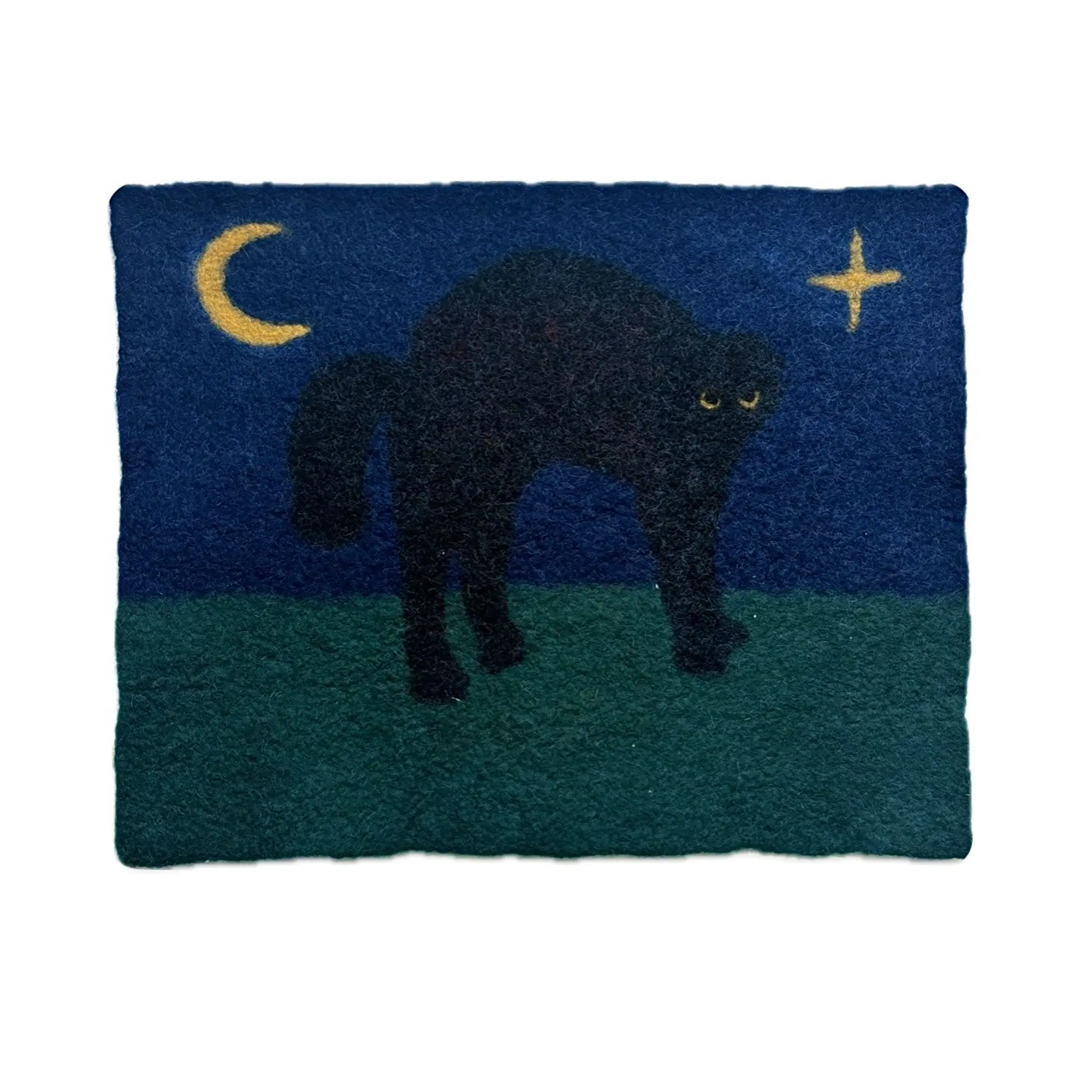
Bugra Ates: Artworks: "Hochwasser Wien" and Iyi Gecele | Permission and courtesy of the Artist
His felt flags, “Flag for Life,” “Flag for Death,” “Flag for Love”, say in symbols what whole essays can’t.
Janinka Kell is the emotional engineer of the group. Her materials bleed history—plastic tubes, willow branches, old rituals reimagined.
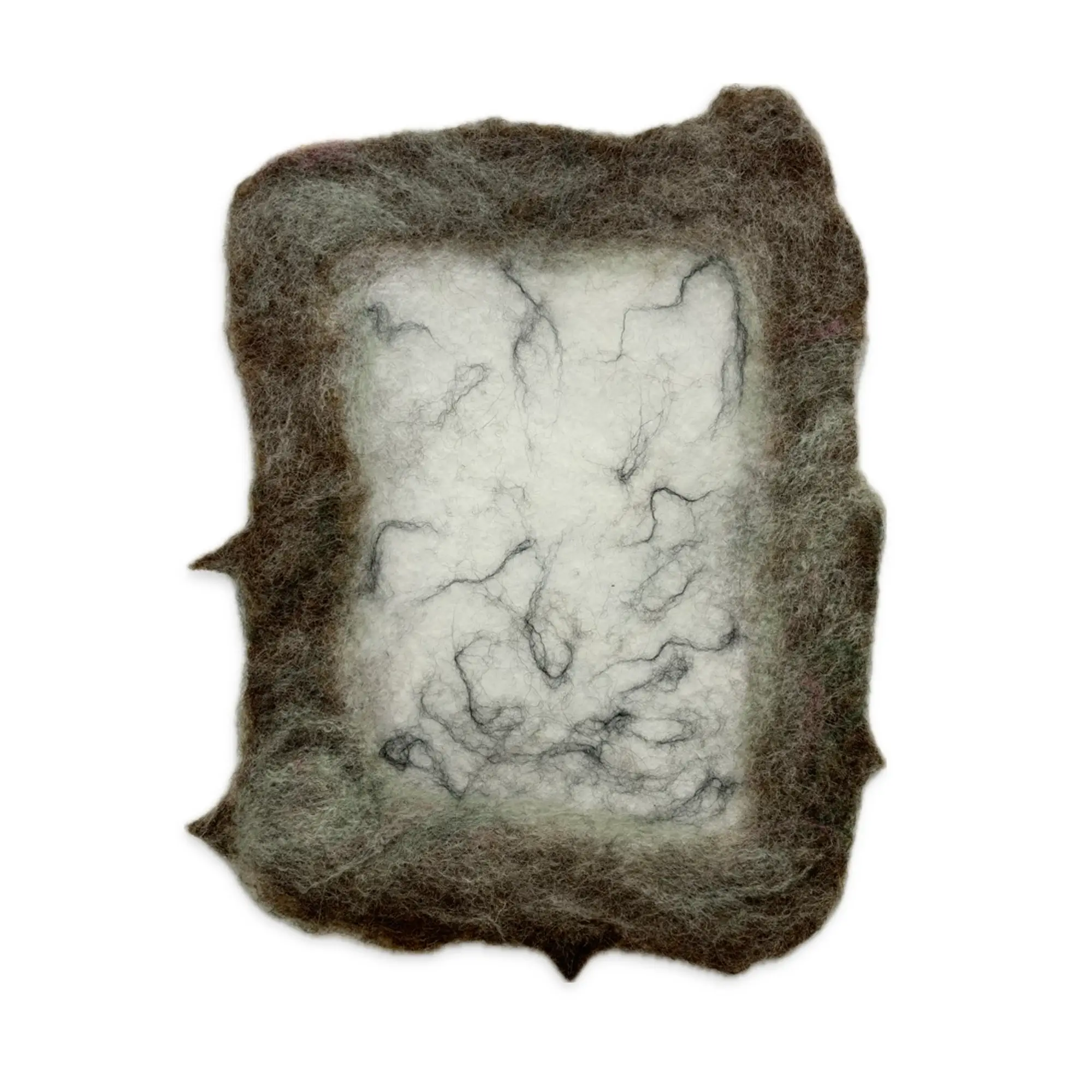
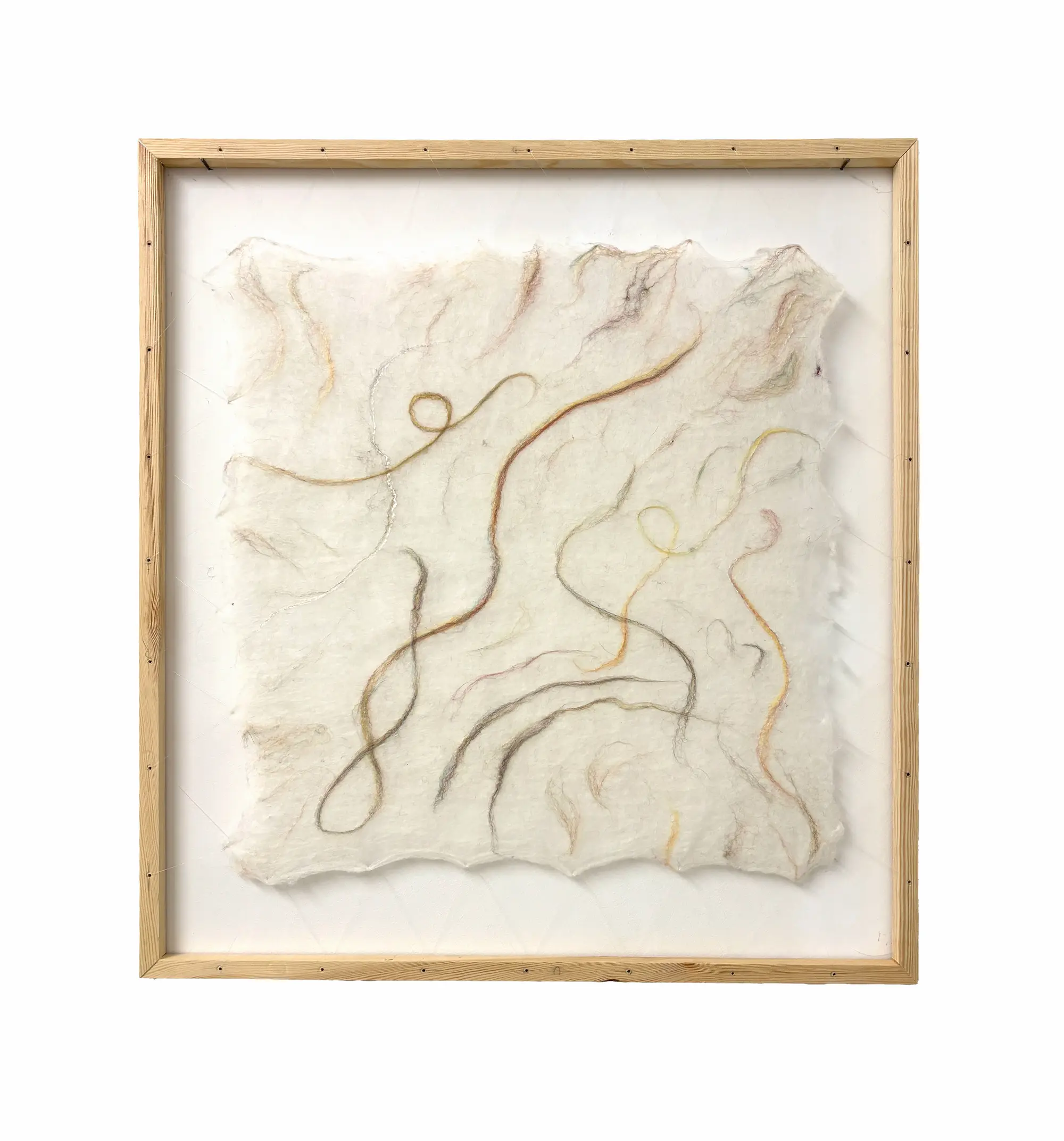
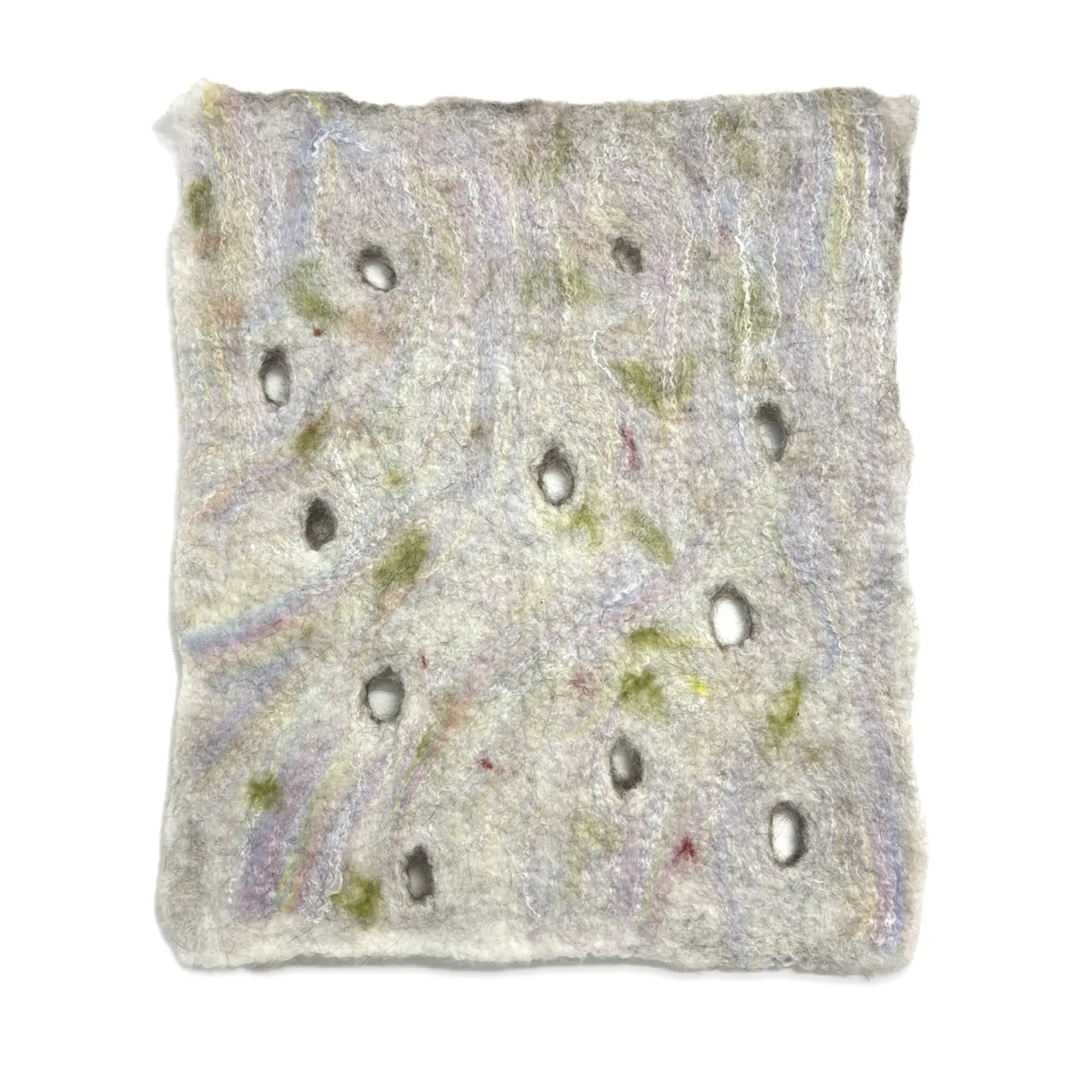
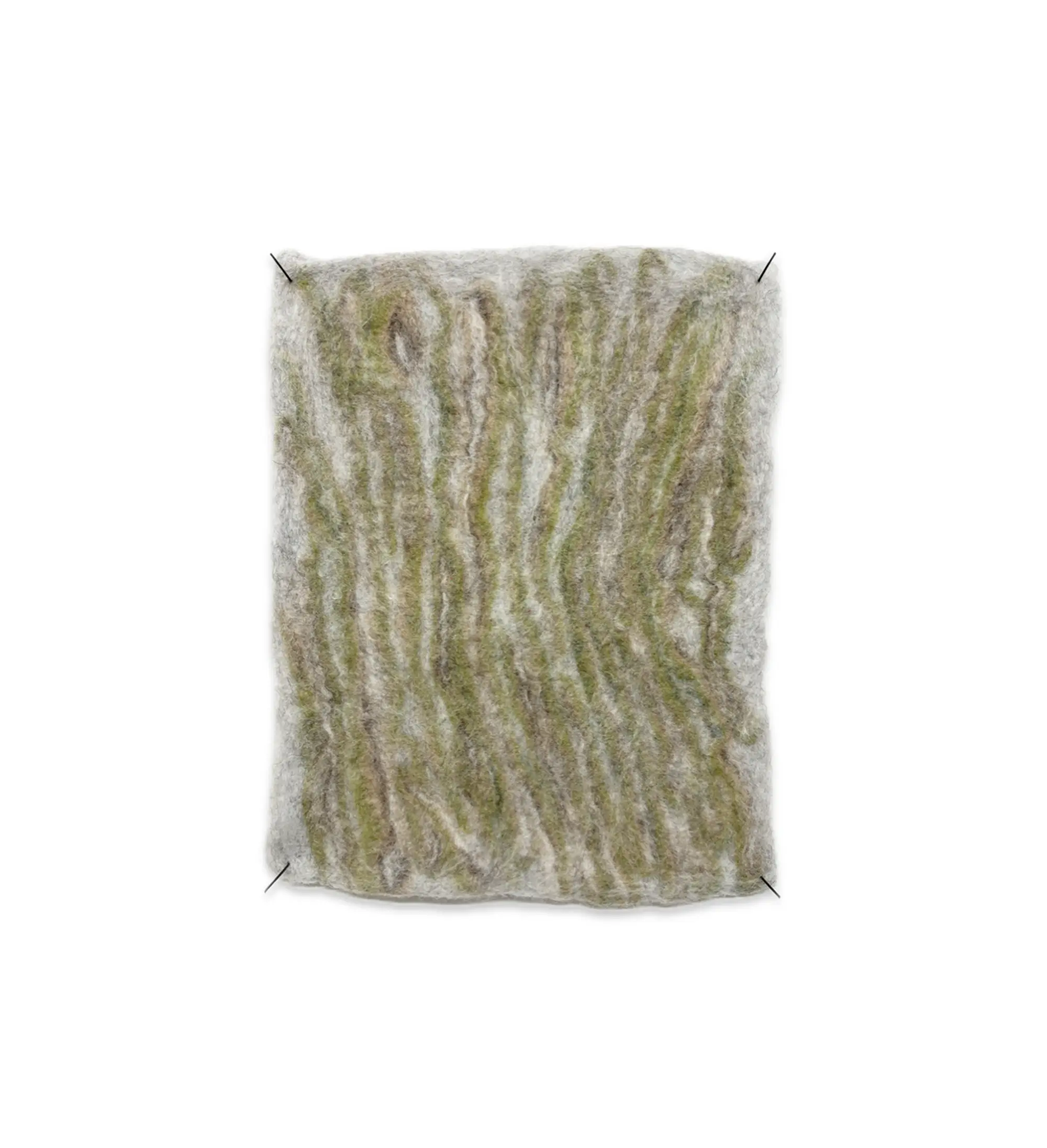
Janinka Kell: 1. Mirror 2. no title 3. no title 4. Tree - Image Courtesy of the artists
Her collaboration with the group is not decorative, it’s psychological. She’s the one who brings the ghosts.
From object-like interventions to warped narratives, Moritz Mizrahi’s work feels like a constant flipping of the mirror, toward the viewer, toward the art world, and often toward the space itself.
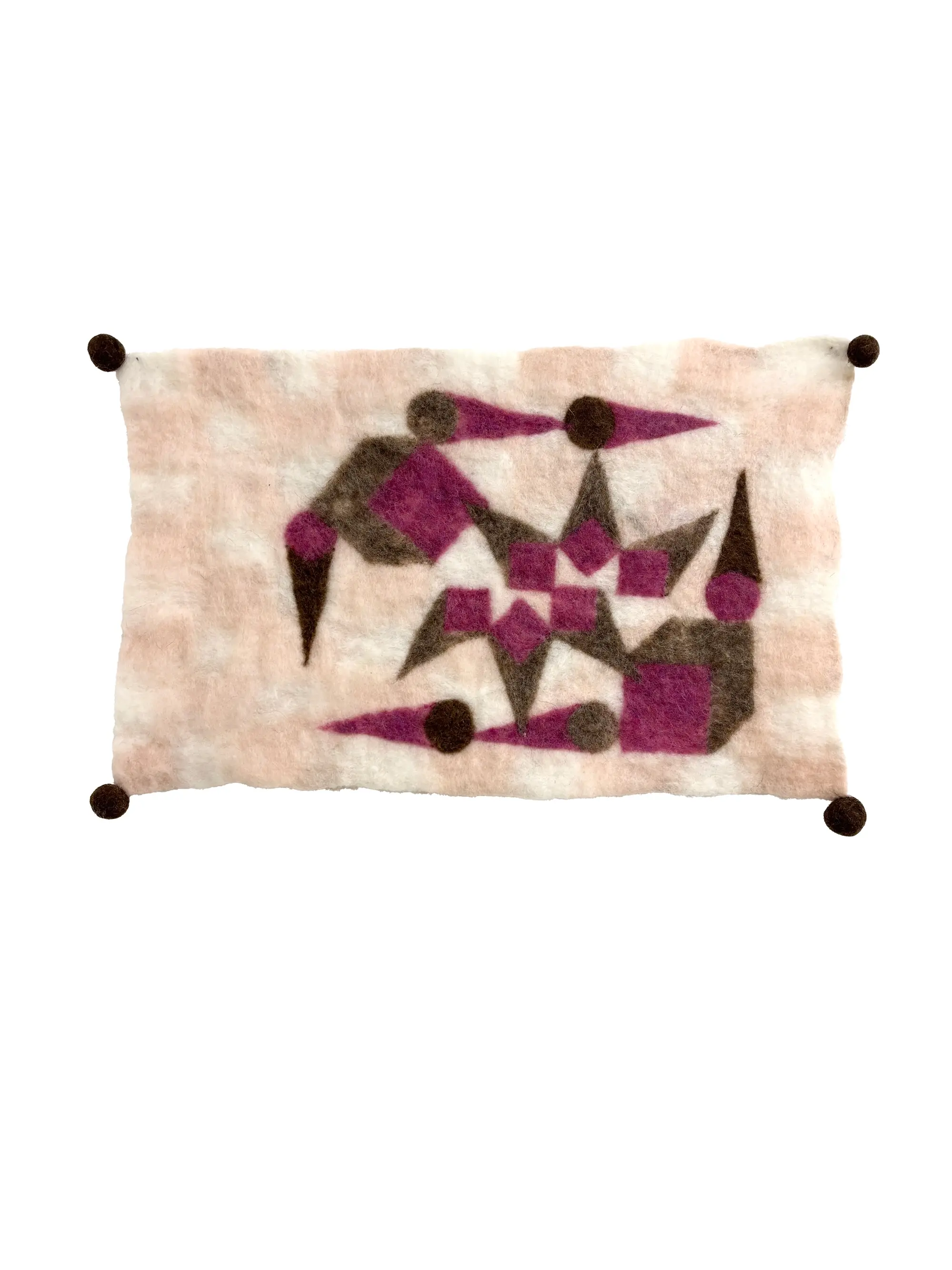
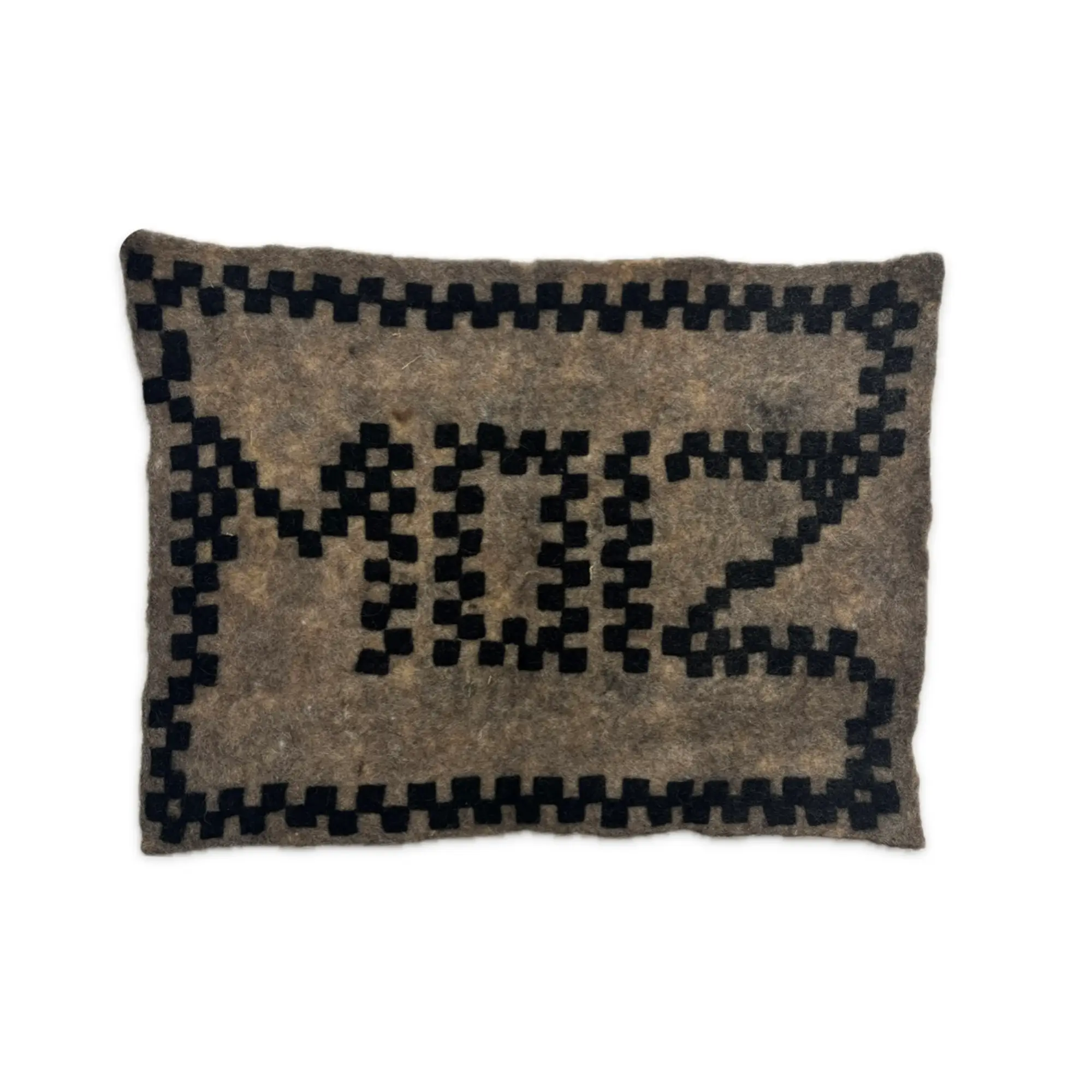
Moritz Mizrahi 1. Kegel, Würfel and Bommel 2 Moiz Image Courtesy of the Artist
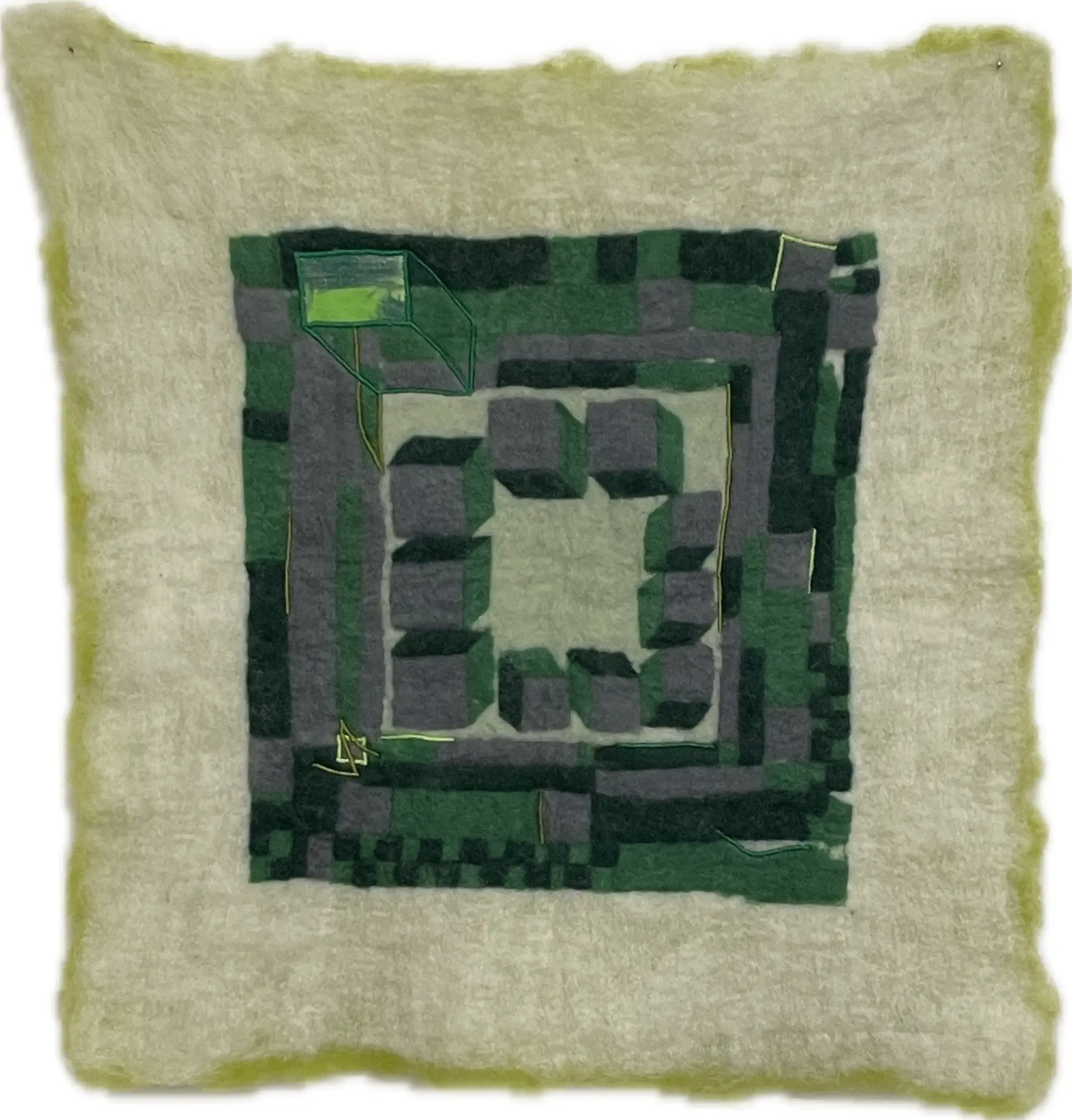
A quiet disruptor, he merges site-specificity with a graffiti sensibility, turning overlooked corners and urban textures into stages for subtle rebellion.
And then there’s Sigmund Hutter. If Filzmäuse were a band, Hutter might be the bassist: keeping things grounded while luring in the unexpected.
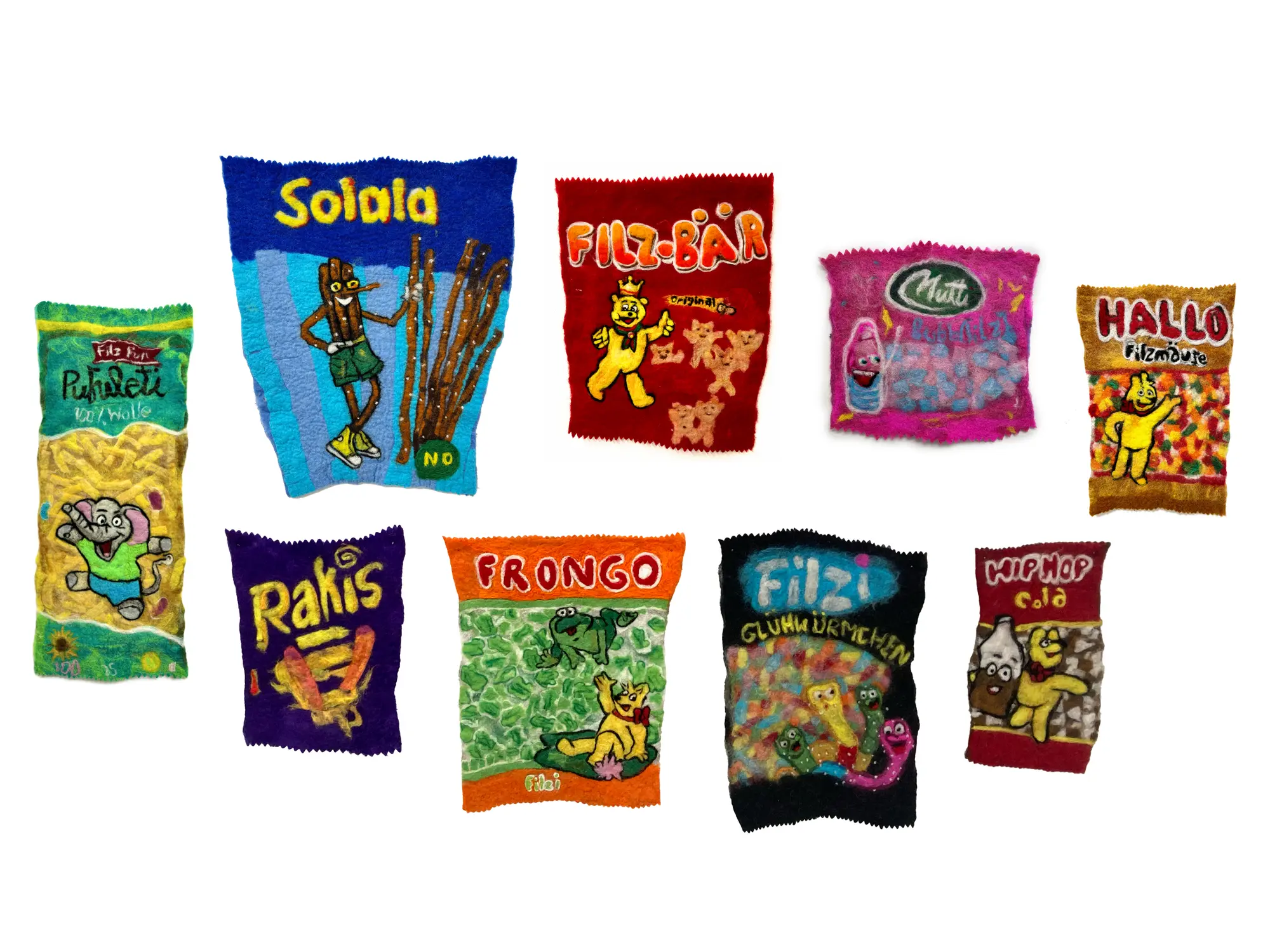
His sculptural approach gives depth and presence. He’s the builder of strange corners.

Sigmund Hutter - Artist Spotlight
Their collective work is not about ego. It’s about chemistry. You see it in their installationsdensely packed, layered like memory, buzzing like a group chat at 2 a.m. They lean into the awkwardness of collaboration, and that’s what makes it good. Really good.
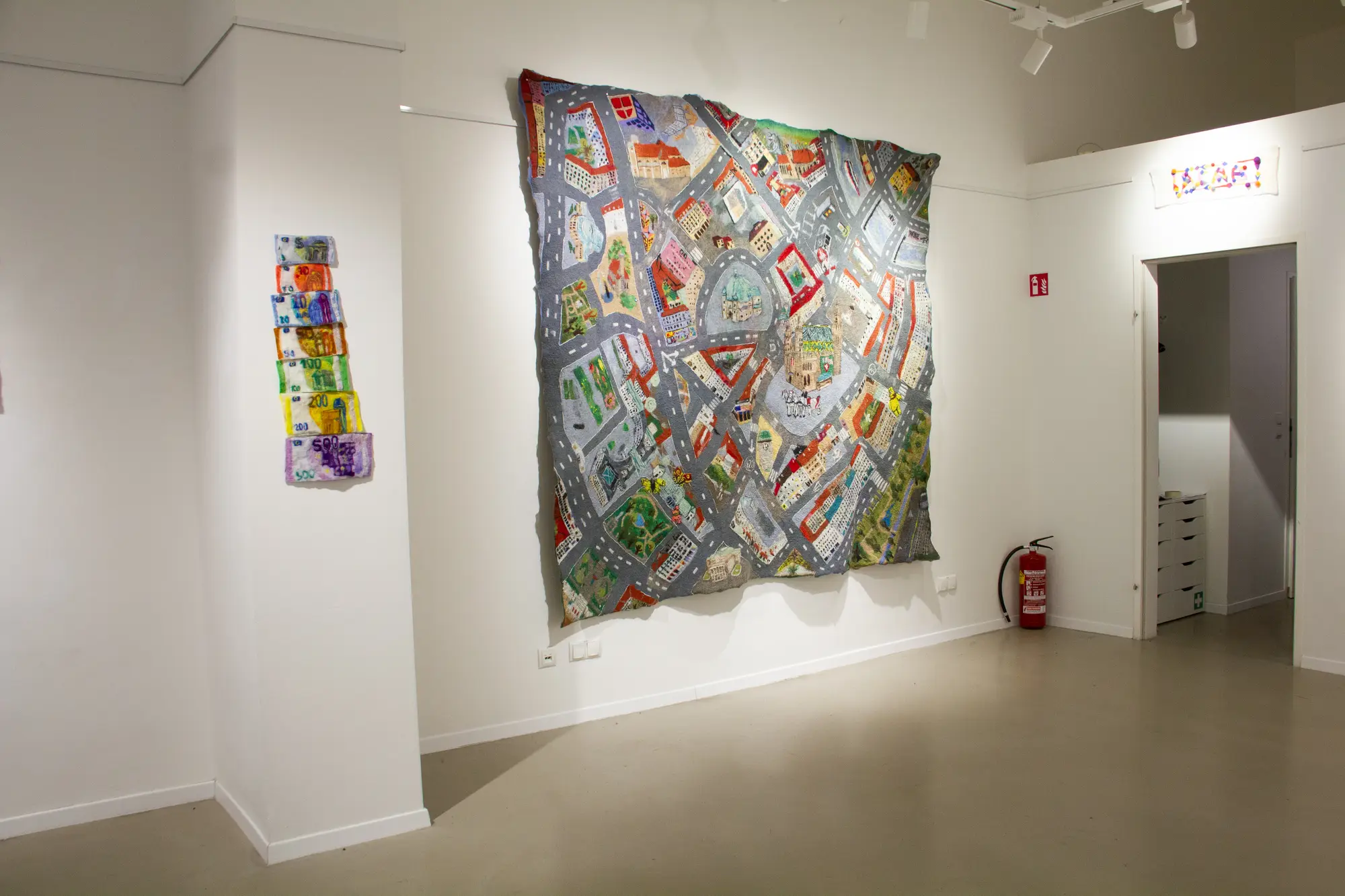
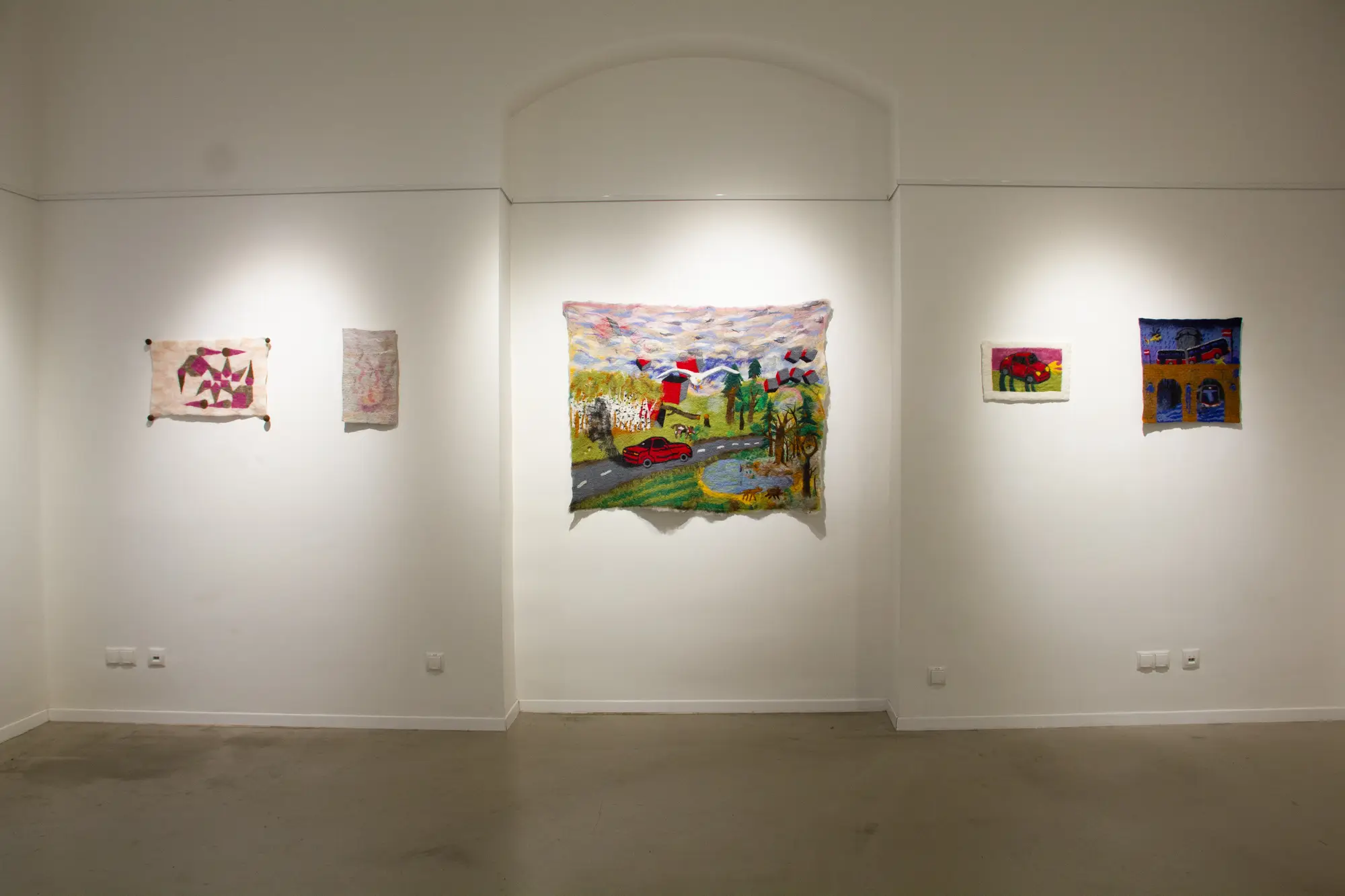
In a world obsessed with slick perfection, Filzmäuse deliver something messier. More human. More truthful.
There’s resistance in their softness, irony in their earnestness. They let the seams show. They let the characters be weird. They let the felt misbehave.
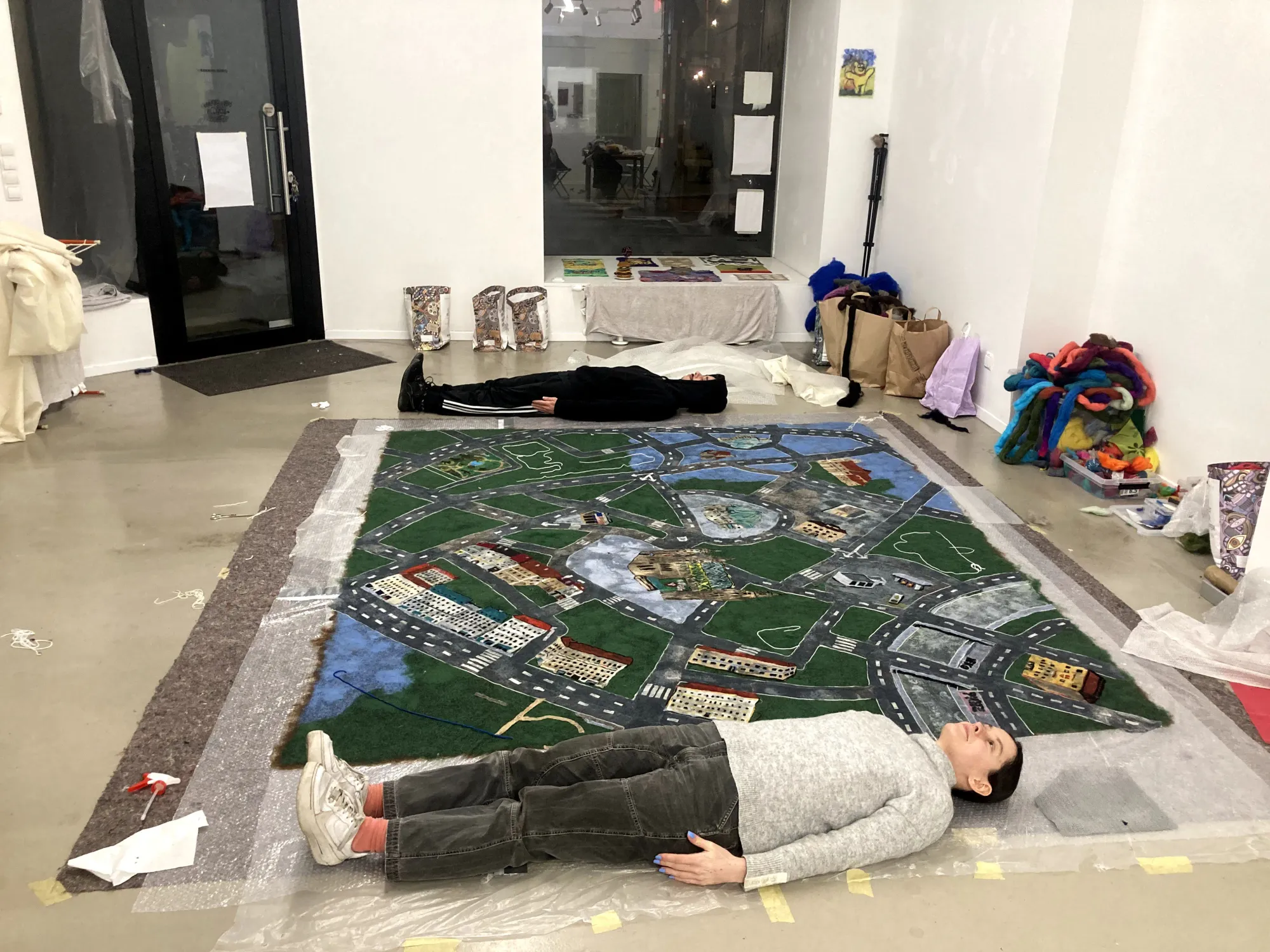
This isn’t a collective trying to fit into the institutional white cube.
This is a group pushing back, one stitch at a time.
And they’re laughing while doing it.

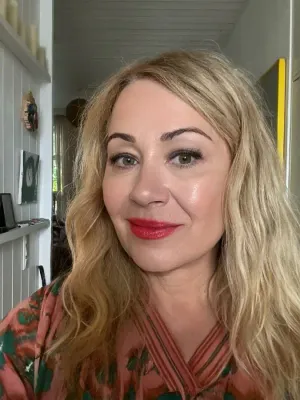
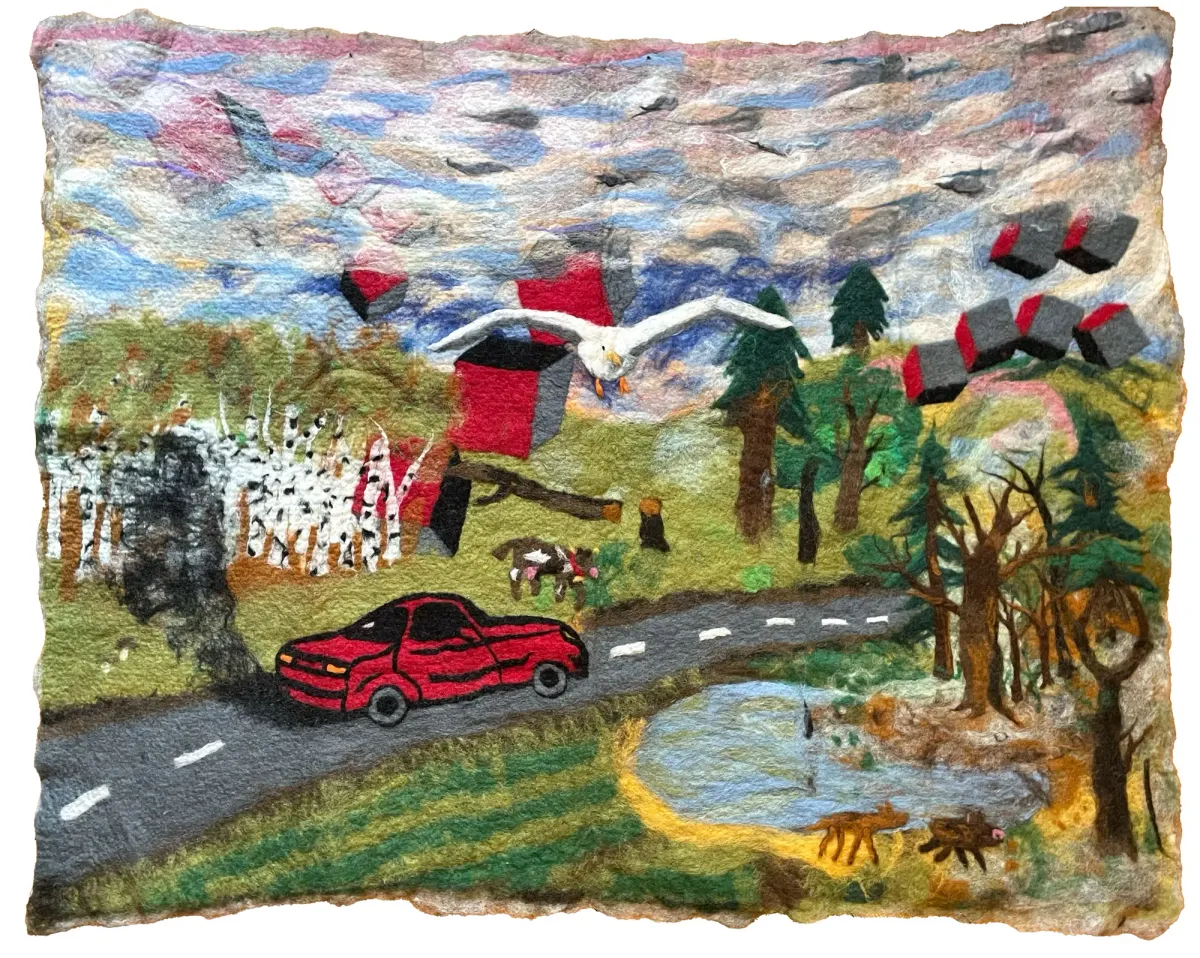

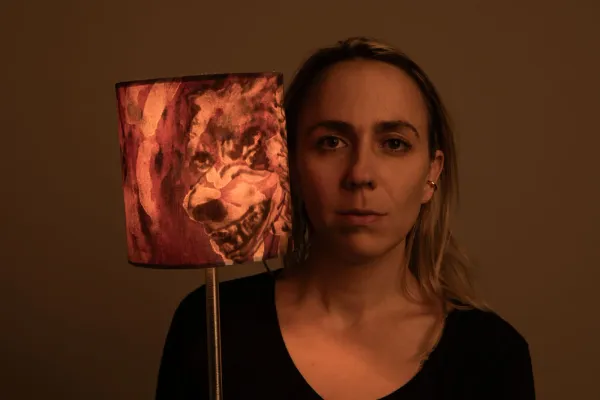
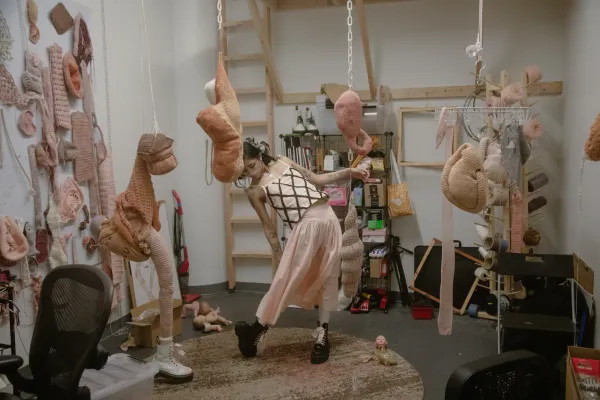
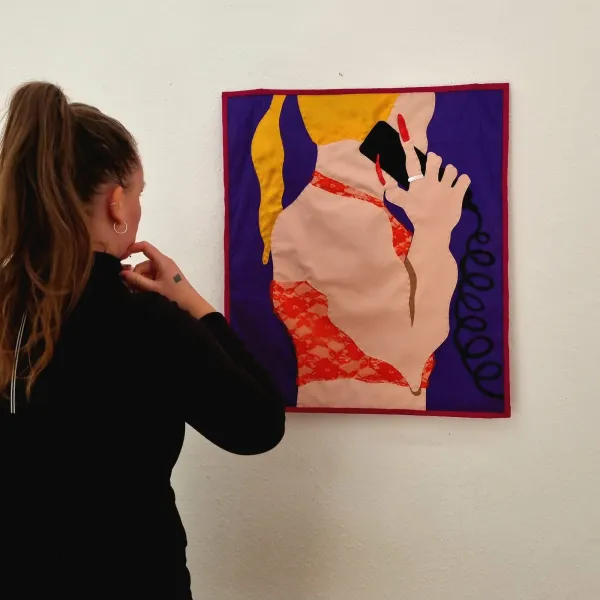
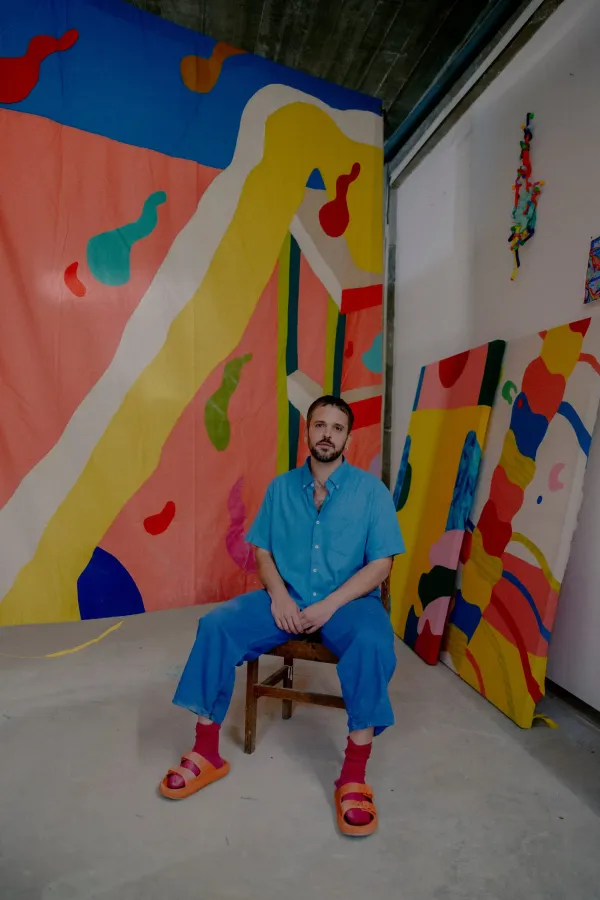
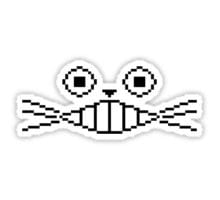
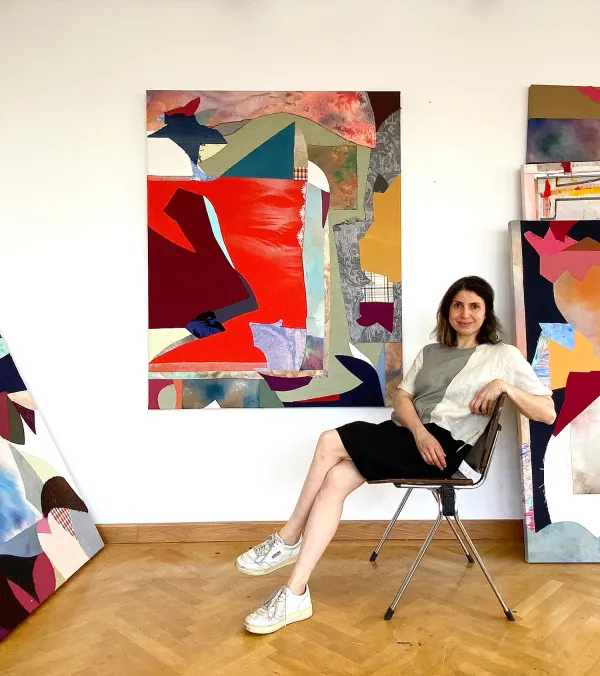
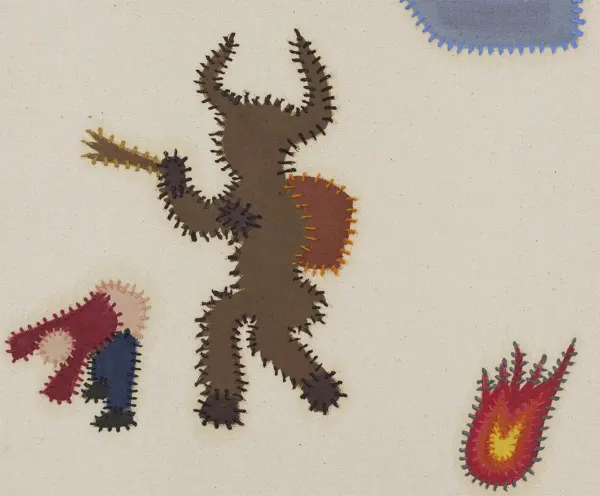
Member discussion